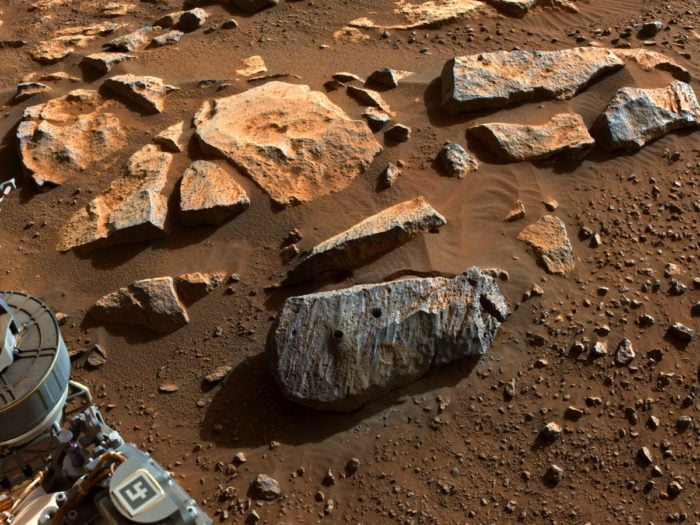
The University of Manchester has developed a “cosmic concrete” called AstroCrete to make the colonization of Mars cost effective. The material is more durable than typical concrete and can function longer in Mars’ challenging environment.
The material is composed of an unlikely and slightly unsavory combination of sweat, tears, urine and a protein from human blood. The protein works to bind the other ingredients together so that the tough material can adequately hold together on Mars’ soil.
AstroCrete has an overall strength of up to 25 Megapascals. The new material’s strength was multiplied by 300 when researchers mixed urea (contained in urine, sweat, and tears) into its recipe. Some of the AstroCrete tested was shown to be stronger than normal concrete.
Dr. Aled Roberts, a research fellow at The University of Manchester who helped create the material, said that “The new technique holds considerable advantages over many other proposed construction techniques on the moon and Mars.”
“Scientists have been trying to develop viable technologies to produce concrete-like materials on the surface of Mars, but we never stopped to think that the answer might be inside us all along.”
“It is exciting that a major challenge of the space age may have found its solution based on inspirations from medieval technology.”
Water on Mars
Most materials used by the astronauts who will eventually live and work on Mars must be sourced from the planet itself. Fortunately, scientists are discovering more and more resources on the red planet every day. Before finalizing the recipe for AstroCrete, scientist had recently discovered that there had been water on the planet’s surface. The water on Mars seems to have existed for a long time, according to the experts.
“It looks like our first rocks reveal a potentially habitable sustained environment,” said Ken Farley of Caltech, project scientist for the mission, which is led by NASA’s Jet Propulsion Laboratory in Southern California.
“It’s a big deal that the water was there a long time,” Farley said.
The rock that provided the mission’s first core samples is basaltic in composition and may be the product of lava flows.
The presence of crystalline minerals in volcanic rocks is especially helpful in radiometric dating. The volcanic origin of the rock could help scientists accurately date when it formed.
Each rock sample can serve as part of a larger chronological puzzle. If they are put in the right order, they can show a timeline of the most important events in the crater’s history.
Some of those events include the formation of Jezero Crater, the emergence and disappearance of Jezero’s lake, and changes to the planet’s climate in the ancient past.
Within the rocks, scientists also found salts. These salts may have formed when groundwater flowed through and altered the original minerals in the rock, or more likely when liquid water evaporated, leaving the salts.
The salt minerals in these first two rock cores may also have trapped tiny bubbles of ancient Martian water. If so, they could offer information about the ancient climate and habitability of Mars.
On Earth, salty minerals have shown their ability to preserve signs of ancient life.
See all the latest news from Greece and the world at Greekreporter.com. Contact our newsroom to report an update or send your story, photos and videos. Follow GR on Google News and subscribe here to our daily email!



